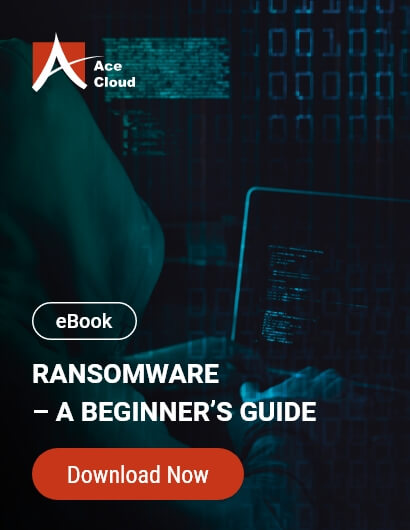We live in an era of clogged email inboxes. As per Spamlaws 2022 report, 45% of all emails are spam. Because of email’s widespread usage, it has become an extremely common entry-point for scams and cyberattacks. Unfortunately, we’ve all become used to solicited emails, making email-based cyberattacks a favorite tactic for fraudsters.
Email phishing is one of the greatest threats that businesses face today. 81% of global organizations have experienced increased email phishing attacks in the post-pandemic world. An even more alarming fact is that 85% of all reported data breaches involve a phishing-related human element.
Isn’t it scary that a single neglectful click can jeopardize your entire business?
Preparing your organization and employees to defend against email phishing is the need of the hour. This blog has all the details you need to arm your team against email-based phishing attacks.
What is Phishing Email?
Email phishing is a prevalent cyberattack that aims to steal confidential user data like credit card information, personal data, or login credentials. Phishing attacks occur when attackers, pretending to be some legitimate authority, send fake emails to users with the intention of tricking them into revealing sensitive data.
The most common end goal of phishing attacks is to steal financial information or network credentials. In many instances, email phishing can be the first step of larger multi-vector attacks which affect your entire organization. Attackers aim to enter organizational networks to plant ransomware or spyware, or gain unauthorized access to business-critical information, via employee emails.
Phishing email is a social engineering tactic. These types of cyberattacks manipulate human emotions and prey on feelings of fear, anxiety, or urgency. These emotions cloud our critical thinking and lead to rash actions. The attackers want us to act as they say without thinking things through.
Suggested Reading : How to Protect Against Ransomware
Common Email Phishing Tactics
There are three primary techniques used to steal your information. Let’s explore each one individually.
Malicious Links
Web links, or URLs, are generally a part of most emails. In phishing emails, web links are the driver behind the scam. It’s pretty simple to create URLs that will infect your system with ransomware, virus, trojan, or other malware and compromise the entire network. Attackers can also create links that lead you to harmful websites or be hidden in seemingly safe download buttons.
Infected Attachments
Email attachments are often used to launch cyberattacks and cripple IT networks. Infected attachments can look like standard word documents, PDFs, or other e-files. Downloading a fake email attachment can destroy sensitive data or even allow the attacker to take control of your computer and other systems in your IT network.
Anti-virus solutions use signature-based detection to block malware automatically. To bypass this, attackers conceal a small piece of software called “exploit” inside the attachment. When the attachment is downloaded, the “exploit” uses existing system vulnerabilities to download the indented malware into the system.
Another method attackers use is files with an embedded malicious macro. Fraudulent pop-ups ensure the user clicks on the “Enable Content” button that runs the macro and infects the computer.
Fake Data Entry Forms
In this tactic, attackers trick the victim into filling in critical information into fraudulent data entry forms. The information demanded can be user IDs, financial data, social security numbers, or phone numbers. For this tactic to work, attackers pose as legitimate figures from established companies, banks, or the government.
Types of Email Attacks
Email phishing is the most general type of email-based scam meant to trick users into divulging private information or downloading malicious content. In most cases, email phishing attacks are sent to a large number of people at the same time. The attackers spread a wide web without targeting anyone in particular.
Other types of email-based phishing attacks are more targeted in nature.
1. Spear Phishing
Spear phishing, derived from the fishing technique where spears are used to target specific fish, is precisely what its name implies. Spear phishing is the opposite of randomized general phishing as it targets specific people. Usually, the targets are higher on the management chain with valuable information and privileged access. This kind of phishing requires the attacker to have special knowledge of the target organization’s structure and personnel.
Suggested Reading: LAUSD (LA Unified School District) Ransomware Cyberattack 2022
2. Whaling (CEO Fraud)
Whaling, also called CEO fraud, happens when attackers pose as the CEO of a company and send the company’s executives an urgent email requiring instant action. A usual tactic is to trick employees into believing the CEO is asking for an urgent money transfer.
3. Business Email Compromise (BEC)
These phishing attacks target specific companies to defraud them and their partners, vendors, and clients. A common BEC tactic is to clone the business’s email or hack an employee’s email account and use it to request payment from vendors with fake invoices.
4. Clone Phishing
This is an advanced form of phishing where attackers use previously sent legitimate emails with links or attachments. Attackers clone legitimate emails and create a perfect copy where the links or attachments are replaced with malware. The phishing email appears as a simple re-send of the original email. This is a dangerous tactic because spoofed emails are hard to identify.
How Can You Spot a Phishing Email?
Phishing attacks are very cleverly carried out, and many times it’s impossible to differentiate a fake email from a legitimate one. But there are some common signs you should look out for when opening an email. Here are the red flags:
- The email starts with a general greeting, like “Dear Customer.” Legitimate companies will know your name.
- The email has grammatical errors. Companies sending emails to their clients make sure there aren’t grammar or spelling errors in their text. Read the email carefully to see if any writing error stands out – it could be a sign that something’s wrong.
- Legitimate companies, banks, or government agencies don’t ask for private information over email via a link or an attachment. If you get such unsolicited emails, there is a high chance it’s a scam.
- If the company domain name or logo seems unusual, it’s a glaring sign of a phishing email. Alternations of domain names, like added numbers or random letters at the end of the email address, can indicate a fake email.
- Legitimate email links match the destination address. The link text should be identical to the displayed URL when you hover your cursor over the link.
While these are common indicators of phishing attempts, they’re not fool-proof detection guidelines. Attackers have become highly advanced and knowledgeable. Even if you receive an email without any red flag, be careful before responding.
Suggested Reading : 8 Best Email Security Practices to Follow in 2022
How Can You Avoid Phishing Attacks?
There are a few ways to stay safe from any email phishing attempt. The below-mentioned best practices call for more time and effort on your part, but the cost of falling victim to a phishing scam is much higher.
1. Find your own links.
Don’t click on web links received in emails. When we click on links sent to us, our path is determined by the sender. Instead, go to the official website of the organization via the browser and look for the same information there. If the email web link is legitimate, you can also finish the action from the website. This is a guaranteed way to determine legitimacy.
2. Personally verify the sender’s identity.
If you receive a random email from a colleague or boss asking for urgent action, reach out to them personally (not by replying on the same email thread) to check if it was really them who sent the message.
3. Protect your accounts and passwords.
Use multi-factor authentication, unique passwords for all accounts, and a password manager to secure entry into your accounts. Also, always keep all your software updated to the latest versions.
4. Use managed email security.
Managed email security is a necessity for large organizations. A dynamic threat landscape demands that your security posture always be ahead of attackers. Managed email security adds a layer of defense to your organization with cutting-edge threat intelligence and detection techniques. Additionally, you get qualified IT experts who are available round-the-clock for instant threat response.
ACE Managed Email Security protects your inbound and outbound email traffic from all types of new-age advanced threats. In partnership with Proofpoint, ACE delivers next-generation email security with signature-based detection, multi-layered content analysis, and heuristic scanning. With ACE as your security partner, you are safe from email phishing, imposter scans, and email fraud. Book a Free Consultation Now!









